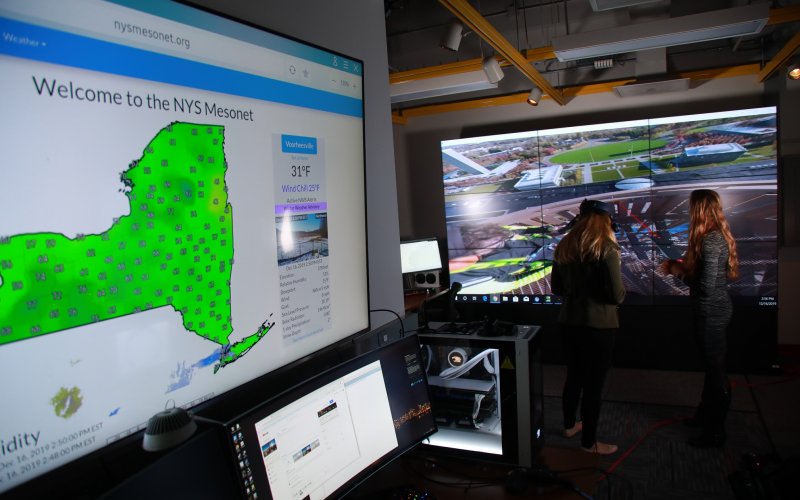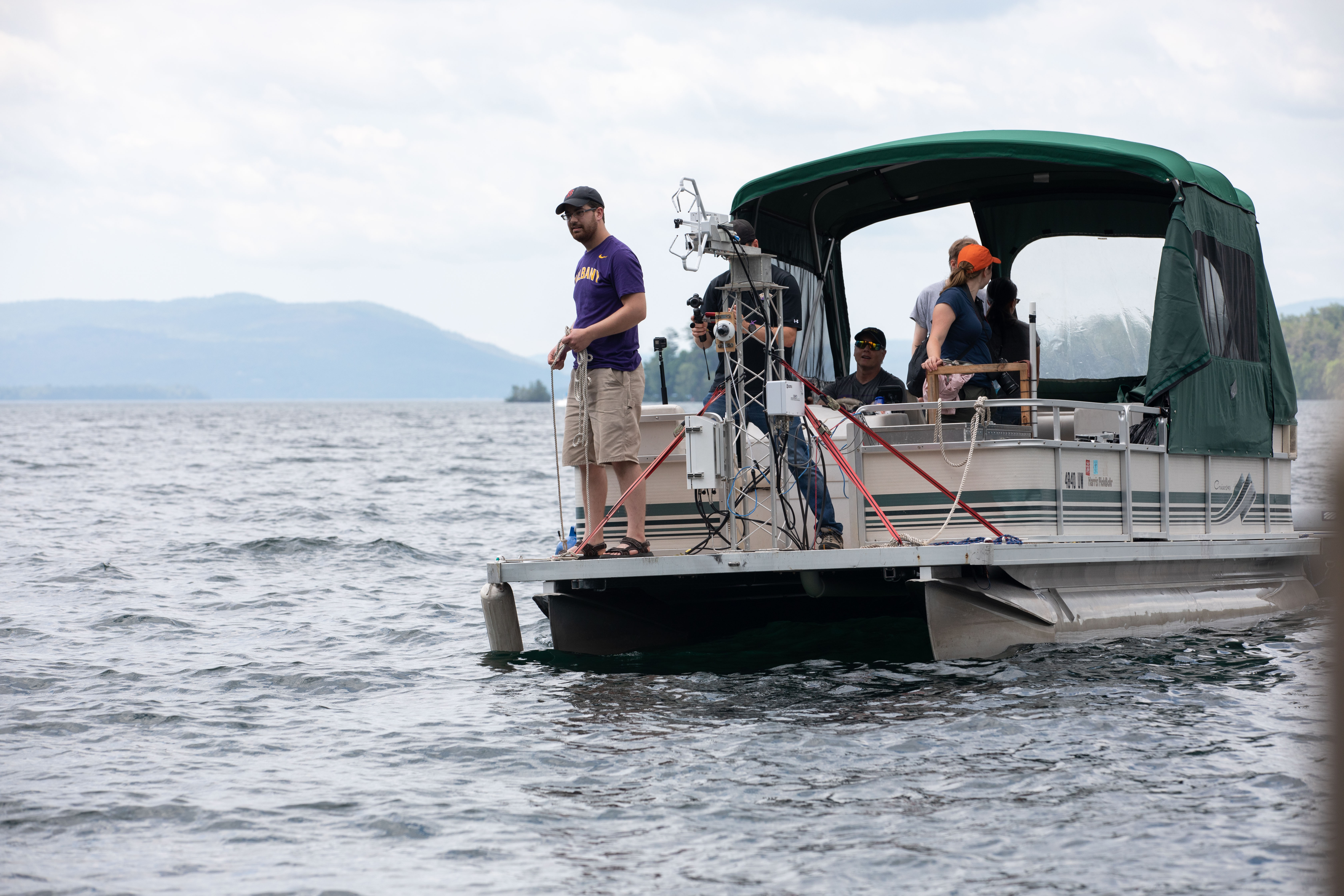UAlbany, IBM Announce New Partnership to Research Weather and Climate Impacts on Water, Transportation and Renewable Energy Systems in New York

ALBANY, N.Y. (March 1, 2022) – The University and IBM Research today announced a new research partnership exploring climate and weather impacts on bodies of water, transportation and renewable energy systems in New York.
The partnership, designed to develop new forecasting models and methods, will leverage the scientific and technical expertise from IBM, UAlbany's Atmospheric Sciences Research Center (ASRC) and Center of Excellence in Weather & Climate Analytics (COE), and the New York State Mesonet, a statewide network of 126 standard weather stations providing real-time atmospheric data and headquartered on campus.
Focus areas of the new partnership will include:
- Harmful algal bloom (HAB) detection and prediction in lakes and reservoirs
- Winter road weather maintenance and operations
- Impacts of severe flooding events (including improving advanced warning)
- Numerical Weather Prediction (NWP) collaboration utilizing NYS Mesonet data and IBM forecasting models and methods
- Renewable energy (solar) generation forecasting
“The use of A.I. and machine learning for weather prediction and forecasting is rapidly evolving,” said Chris Thorncroft, who directs ASRC, the COE and NYS Mesonet, “By combining UAlbany’s resources and expertise in weather and climate with IBM, this new partnership will continue to advance these innovative technologies and help improve weather-based decision making for New Yorkers.”
“Our partnership with UAlbany will enable advances in NWP and other environmental models, which are critical to understanding the diversity of local impacts of climate change from highly urbanized areas to lake and reservoir watersheds,” said Lloyd Treinish, chief scientist at IBM Research for climate and weather. “While we will have an initial focus on New York State, we expect that we will be able to apply these advances to predictive models for other regions.”

The project adds to a growing relationship between IBM and UAlbany’s weather and climate researchers. ASRC is currently leading a U.S. Department of Energy project to design, install and deploy a new buoy-based flux measurement system to improve forecast models and decision-making for offshore wind generation. The project started phase one field testing on Lake George, Oneida Lake and Seneca Lake last summer, through partnership with The Jefferson Project — a research collaboration between IBM Research, Rensselaer Polytechnic Institute and the Lake George Association to use advanced technology to understand the impact of human activity on freshwater.
Through the new partnership, UAlbany and IBM researchers will aim to extend the Jefferson Project’s water quality research on Lake George to other New York lake watersheds and jointly seek additional federal research funding.
In November, ETEC, a new $180 million, 246,000 square-foot R&D complex opened on the Uptown Campus, housing all of the University's weather and climate researchers, along with the NYS Mesonet, COE and the nation’s first College of Emergency Preparedness, Homeland Security and Cybersecurity, under one roof. It is also the new home of the National Weather Service’s Albany Weather Forecast Office.
UAlbany’s Weather-Climate Enterprise includes close to 120 faculty, researchers and staff, the largest concentration of atmospheric, climate and environmental scientists in New York.




